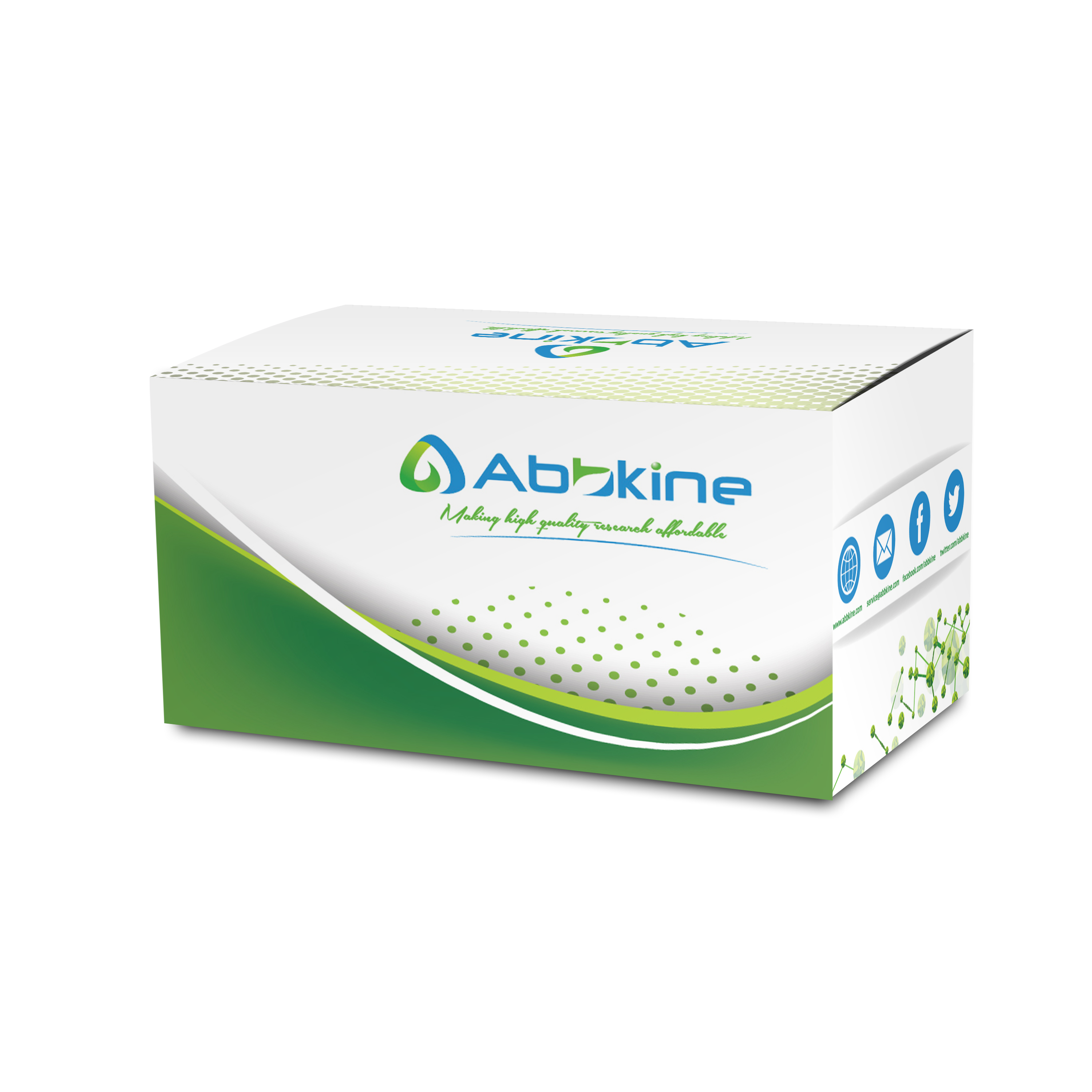| Product name | CheKine™ Reactive Oxygen Species (ROS) Detection Fluorometric Assay Kit |
| Applications notes | CheKine™ Reactive Oxygen Species (ROS) Detection Assay Kit provides a simple, sensitive, rapid ROS detection method. ROS detection is based on the fluorescent probe DCFH-DA . DCFH-DA is a cell-permeable sensitive probe used to detect intracellular reactive oxygen species (ROS). This probe could be hydrolyzed into DCFH by esterase in the cell while passing through the living cell membrane. DCFH is no fluorescence and cannot transmit the cell membrane, which then can be could be oxidated by ROS and produce the fluorescent DCF. Then the fluorescent could be detect by flow cytometry or fluorescence microscopy , and according which the level of cellular reactive oxygen species can be analyzed. |
| Kit components | • DCFH-DA (10 mM) •PositiveControl (50mM) |
| Features & Benefits | • provides a simple, sensitive, rapid ROS detection method. • based on the fluorescent probe DCFH-DA . • suitable for flow cytometry or fluorescence microscopy. • Provides detailed sample preparation and results calculation methods. |
| Usage notes | • Do not mix the components between different batch numbers and manufacturers; otherwise, the results may be abnormal. • Avoid bubbles while mixing or redissolving components. • Change pipette tips frequently to avoid cross contamination between components. • Ensure that all components and equipment are at the proper temperature before starting the experiment. • The working concentration of positive control H2O2 should be 100 μM (Recommend during 50-200 μM depend on the cell types ). The level of Reactive Oxygen Species (ROS) will increase significantly after stimulated 30 min-4 h. The level of Reactive Oxygen Species (ROS) maybe very different for different cells while stimulating with the positive control. The stimulating time and the concentration of positive control could be prolonged or increased, if there is no obvious rise after 30 min . Or shorten the time or reduce the concentration of positive control, while the fluorescent signal is too strong. • During the experiment, the fluorescent probe DCFH-DA can be diluted in 1: 2000-1: 5000, and make the final concentration of DCFH-DA to 2-5 μM if the signal of negative control also too strong. The time of probe incubating can be adjusted in 15-60 minutes, and minimize the exposure time while reading the film, and the exposure time of the control group and test groups should to be consistent. • Reactive Oxygen Species (ROS) positive control (H2O2) is only used as a sample as a positive control, and not all test groups need positive control. • Please wash away the unbound prode after incubating the prode , otherwise it will cause a high background. • Try to shorten the detection time after incubating the probe (except for stimulation time) to reduce various possible errors. |
| Storage instructions | Please store the whole kit at -20°C upon receipt ,and protect from light. The kit is valid for 12 months. Please refer to the table below Materials supplied and Storage conditions to store all the components. |
| Shipping | Gel pack with blue ice. |
| Precautions | The product listed herein is for research use only and is not intended for use in human or clinical diagnosis. Suggested applications of our products are not recommendations to use our products in violation of any patent or as a license. We cannot be responsible for patent infringements or other violations that may occur with the use of this product. |
| Background | Reactive Oxygen Species, Ros is natural by-products of oxygen normal metabolism, play an important role in cell signaling and in vivo balance. However, in the oxidative stress correlation state, the ROS level can be greatly increased. The accumulation of ROS will seriously damage the cell structure. Oxidative stress plays an important role in the research of cardiovascular disease, diabetes, osteoporosis, stroke, inflammatory disease, and neurodegenerative diseases and cancer,etc. ROS detection will help determine how oxidative stress adjusts various intracellular pathways. |

FigCheKine™ Reactive Oxygen Species (ROS) Detection Assay Kit (Fluorometric)
Author:Gao, Jiaming, et al. Publication name:International journal of biological sciences IF:9.2
Author:Tu P, Pan Y, Wang L Publication name:Biomaterials Research IF:6.70
Author:Ao X, Jiang T, Li Y, et al Publication name:Iscience IF:5.8
Author:Chang C, Huang K, Xu X, et al Publication name:Respiratory Research IF:5.8
Author:Zhu, Chuanmeng, et al Publication name:Heliyon IF:4
Author:Zhu C, Bai Y, Qiu J, et al Publication name:Heliyon IF:4
Author:Zhu C, Bai Y, Qiu J Publication name:Heliyon IF:4.00
Author:M Parija, AK Adhya, SK Mishra Publication name:Oncotarget IF:3.331
Author:Jiang ZB, Gao J Publication name:Kaohsiung J Med Sci IF: 1.737
You must be logged in to post a review.
Reviews
There are no reviews yet.